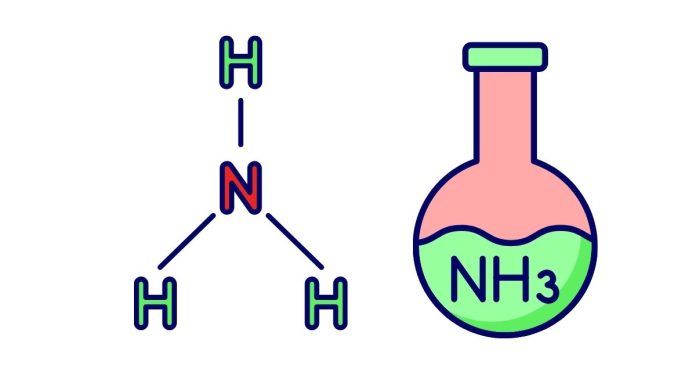Ammonia (NH₃) is a neutral molecule, which means it has no overall charge. Let me walk you through the reasoning behind this:
1. Chemical Structure of NH₃:
- Nitrogen (N) is in group 15 of the periodic table, so it has 5 valence electrons.
- Hydrogen (H) is in group 1 and has 1 valence electron.
In NH₃, nitrogen forms three covalent bonds with three hydrogen atoms. Nitrogen shares one electron with each hydrogen atom to form three N-H bonds, resulting in a stable electron configuration for both nitrogen and hydrogen.
2. Electron Count and Distribution:
- Nitrogen in NH₃ has 5 valence electrons, and by forming three bonds with hydrogen atoms, it shares 3 of these electrons. This leaves nitrogen with 2 electrons in a lone pair (unshared electrons).
- Hydrogen has 1 electron in each bond with nitrogen. Each hydrogen atom completes its valence shell by sharing one electron with nitrogen, resulting in each hydrogen atom having 2 electrons (a full shell for hydrogen).
3. Formal Charge Calculation:
To determine if the molecule has any charge, we can calculate the formal charge of each atom.
- Formal charge of nitrogen (N): The formal charge is calculated using the formula:
Formal charge=Valence electrons−(Nonbonding electrons+2Bonding electrons)- Valence electrons of nitrogen = 5
- Nonbonding electrons (lone pair) = 2 electrons
- Bonding electrons = 3 bonds × 2 electrons/bond = 6 electrons
Formal charge of nitrogen:
5−(2+26)=5−(2+3)=5−5=0
Therefore, nitrogen has a formal charge of 0. - Formal charge of hydrogen (H): For each hydrogen atom:
- Valence electrons of hydrogen = 1
- Nonbonding electrons = 0
- Bonding electrons = 2 electrons (1 bond with nitrogen)
Formal charge of hydrogen:
1−(0+22)=1−1=0
Therefore, each hydrogen atom has a formal charge of 0.
4. Overall Charge of NH₃:
Since all atoms (nitrogen and hydrogen) have a formal charge of 0, the overall charge of the molecule is 0.
Thus, NH₃ is neutral and carries no net charge.
5. Molecular Geometry and Polarity:
Although NH₃ is neutral, it has a polar nature due to the lone pair on nitrogen and the uneven distribution of charge. Nitrogen is more electronegative than hydrogen, so the shared electrons are drawn toward nitrogen, giving the nitrogen a slight negative partial charge and the hydrogens slight positive partial charges. However, the molecule as a whole is neutral because the charges cancel out.
Conclusion:
Ammonia (NH₃) has no overall charge and is neutral. The formal charges of all the atoms (nitrogen and hydrogen) are zero, confirming that NH₃ does not carry a net positive or negative charge.


